Erik Johansson combines multiple photographs in Photoshop to create surreal scenes that appear deceivingly real
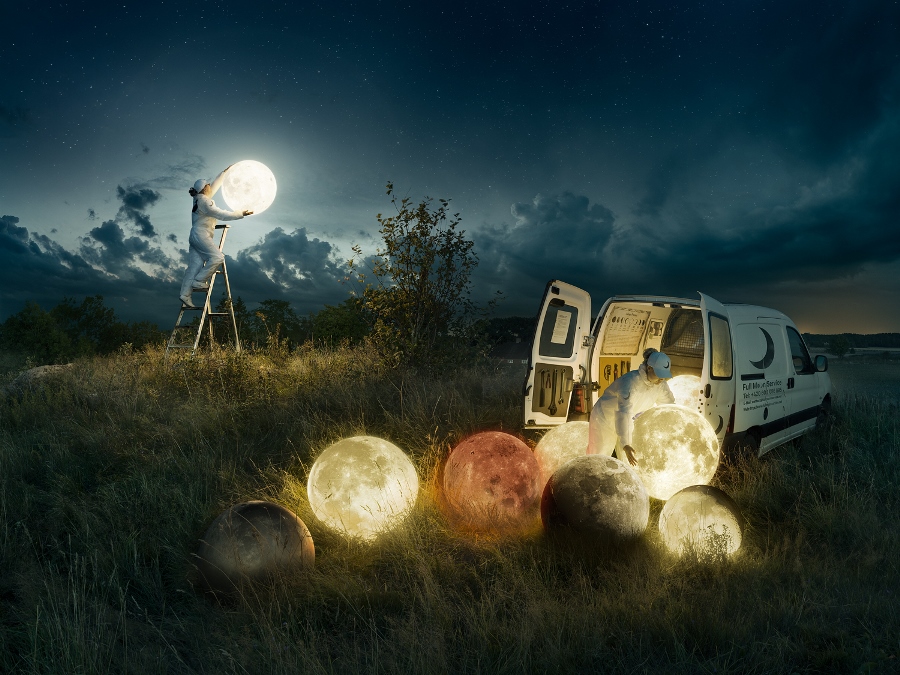
Erik Johansson’s images aren’t just visually pleasing, they’re devilishly clever too. No matter how implausible the image, Erik’s creations always look deceivingly real. As he puts it himself: “I create scenes that feel like they could exist in the real world, but at the same time, they couldn’t possibly.” To build his scenes, Erik combines multiple images using Adobe Photoshop and insists on only manipulating photographs of items from the real world or props (no CGI). Despite the complexity of each image, Erik insists that his works are simply the product of experimentation and meticulous planning. We sat down with the Prague-based photographer and artist to find out more.
Wex Photo Video: Your images resemble the work of surrealist artists such as Salvador Dali. Have artists influenced your work?
Erik Johansson: Yes. I would say I am definitely more influenced by artists than other photographers. This is reflected in the way I work; I plan and create scenes that don’t fit into the real world. Sometimes I capture the material I need with a camera and put everything together during post-production, and sometimes I make props and build the scene.
W: Did you study photography or art?
EJ: I come from a different background altogether. I didn’t study at art school; I studied to become a computer engineer. This may be reflective in the way I approach my work, breaking everything down into smaller problems. I create scenes that feel like they could exist in the real world, but at the same time, they couldn’t possibly. The planning takes a lot of time, I have to come up with a concept, build props and find a suitable location. I try to sketch ideas, but the majority never get realised. I proceed with what I believe will work and look good in the end.
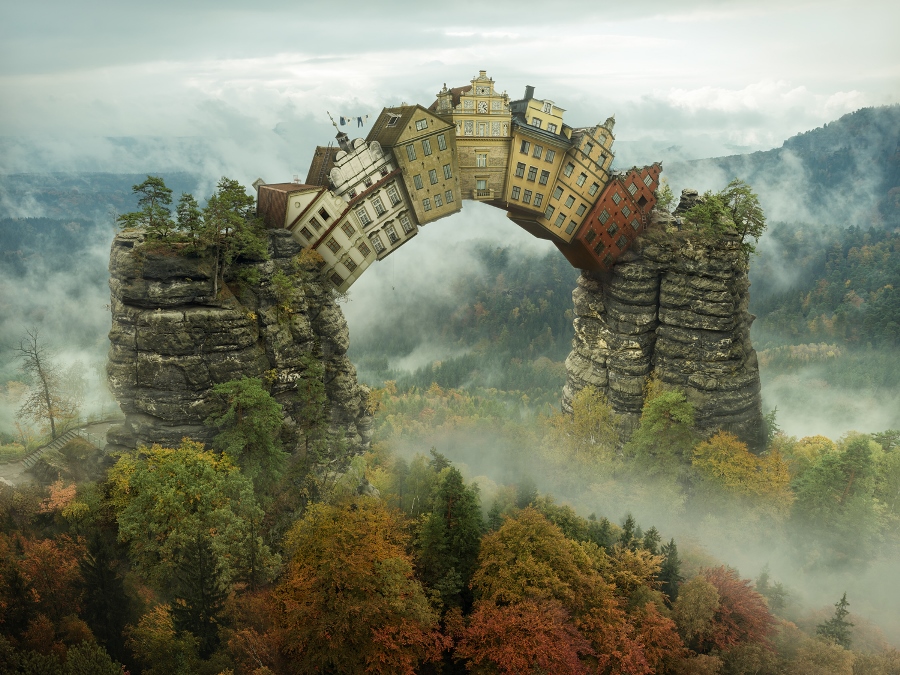
W: Do you use any digital painting techniques to create your scenes?
EJ: Everything that goes into my work is photographed. I don’t use Adobe Illustrator or any form of CGI. I set myself these limitations because they aid my creativity. In a way, the possibility to do anything can be limiting, setting myself this rule helps to provide me with direction.
W: Do you consider yourself a photographer, illustrator, artist or designer first?
EJ: I guess, in a way, I’m some kind of visual artist that uses photography as a means to create the ideas in my mind… But that’s a long title [laughs]. When people ask me what I am, I say I’m a photographer. I’ve been called a Photoshop master, genius and wizard — of course it’s an important part of my workflow — but I’m not really a Photoshop magician. It’s about planning well, collecting materials and bringing everything together. So long as I have good material, the Photoshop bit is putting the pieces together. If you have a good idea and plan, it’s a straightforward process.
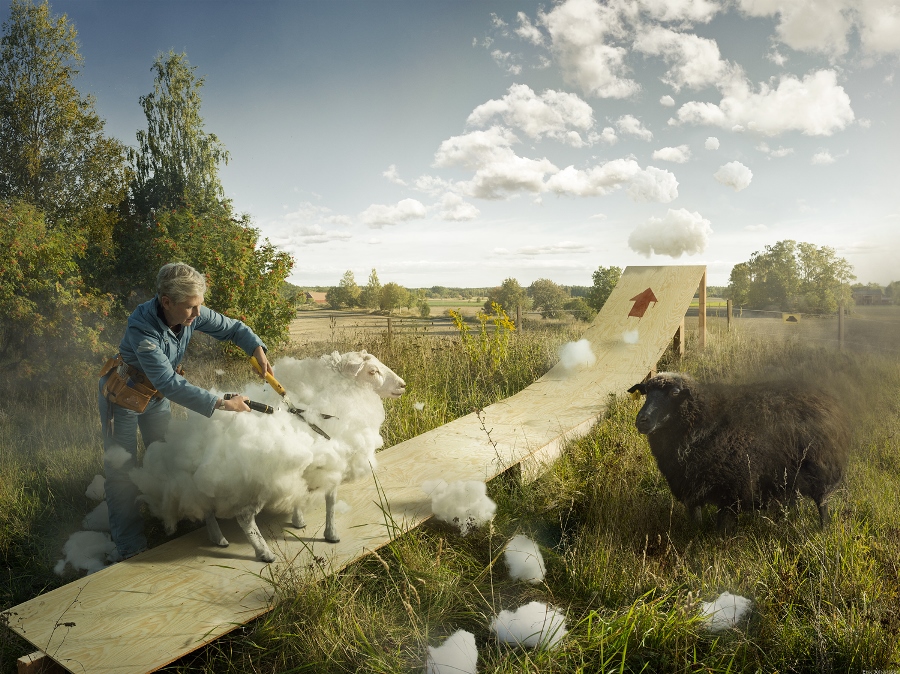
W: In your YouTube video Full Moon Service - Behind the Scenes concept drawings are displayed on a pin board in your office. Is this how you conceptualise all of your artworks?
EJ: Yes, and I’ll work on several projects at the same time. The ideas that take the longest time to develop often become the most interesting. I have a board in my studio with a bunch of simple sketches on it, some are concepts, some I have materials for and some I’m putting together. Right now, I have two or three ideas that are almost finished.
The way I create my work hasn’t changed much over the past five years. I pick ideas very carefully before working on them because they are such long projects; that’s why I plan well, rarely will I quite halfway through an idea. I usually work with a small budget — I can’t just hire a helicopter for example — so some ideas that aren’t practical right now, I’ll carry around for the future.
I had the idea for Demand & Supply (below) almost 10 years ago. I never really knew where it would take place, but I eventually travelled to the Faroe Islands for a commissioned project and found an amazing rock formation, which was perfect for my idea. Finding a place can be the spark sometimes.
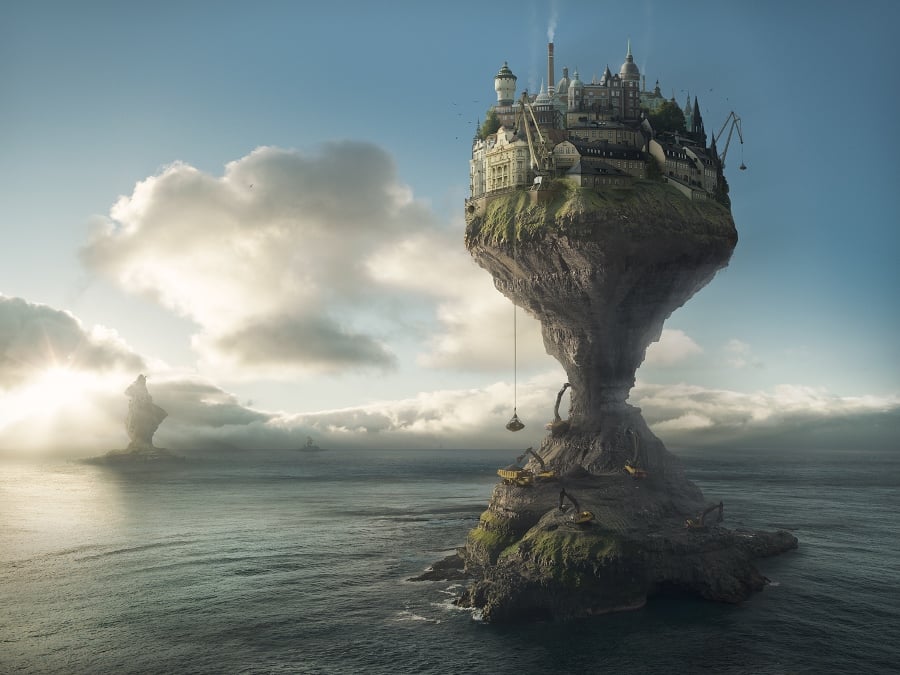
W: Where do your initial ideas or concepts come from?
EJ: I get inspiration from looking at the things around me and making unexpected associations with them. I ask myself, almost in a childish way: ‘How can I make something different?’ Usually, I don’t just come up with an idea for a project, it’s a smaller idea. I’ll sketch it out and then I’ll combine lots of these little ideas and let them grow over time. We’re all born creative. Children play and make up games, but I think grown-ups can be childish too; we just have to question the norm.
W: How did you learn to manipulate photographs so well?
EJ: I always liked drawing. As long as I can remember, I’ve liked to draw and express myself visually. I’ve also been quite interested in computers. My dad had a computer quite early on, in the 1980s, and I enjoyed playing simple games. When I got my first digital camera on my 15th birthday, in 2000, I realised I could combine the two interests. That was the first step.
Although I enjoyed drawing, I couldn’t express myself in the real way I wanted to, but my camera could capture a real moment and I could manipulate it. I started with simple projects; I took photographs of my sisters, cut them out and put them on a rooftop, I added an extra finger onto a photo of my hand. I learned the basics by playing around, but never though it could earn me a living — that’s why I followed my other interest, computers.
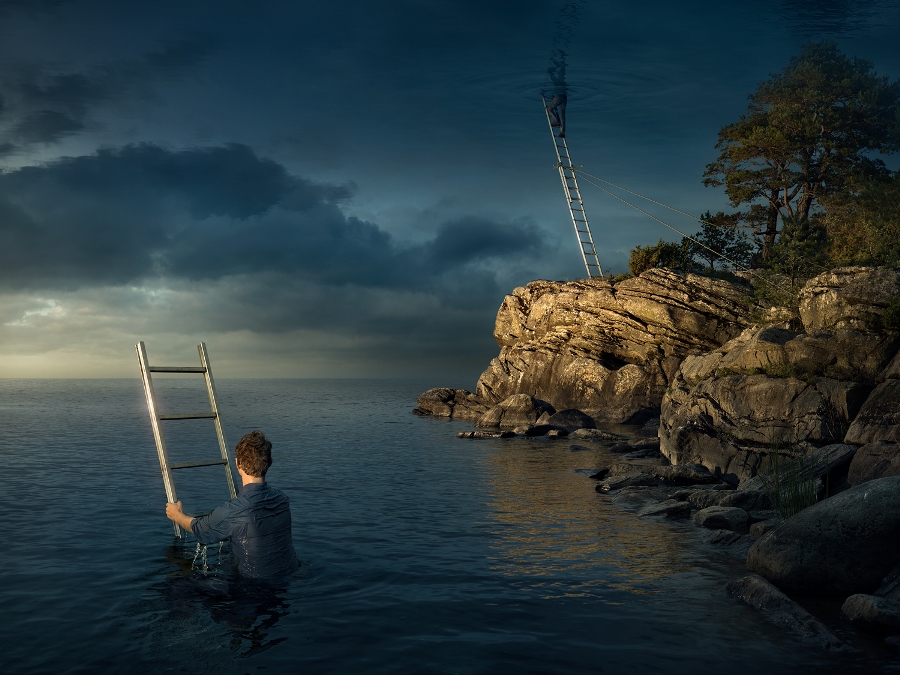
W: Do you stockpile images of random objects for future projects?
EJ: I have a library of certain things: trees, landscapes and skies — I always shoot skies, you can never have enough. I like to shoot new material for the main parts of a project. It’s always a little bit of a compromise to use existing assets as I usually have an idea as to what I want the perspective, angle and lighting to look like. As such, 90% of the time I shoot new material. This is perhaps, partly, why projects take so long.
W: You use a graphics tablet. Do you have any tips for anyone who hasn’t used one before?
EJ: Around 50% of my time editing is spent using a graphics tablet, so I’m not completely used it. The tablet is very good for certain tasks and provides you with more possibilities as it’s pressure- and tilt-sensitive. As for tips, around 10 years ago I bought a keyboard without any letters on the keys, which forced me to learn to touch-type. I think the same goes for graphics tablets; hide your mouse and you’ll be forced to use it.
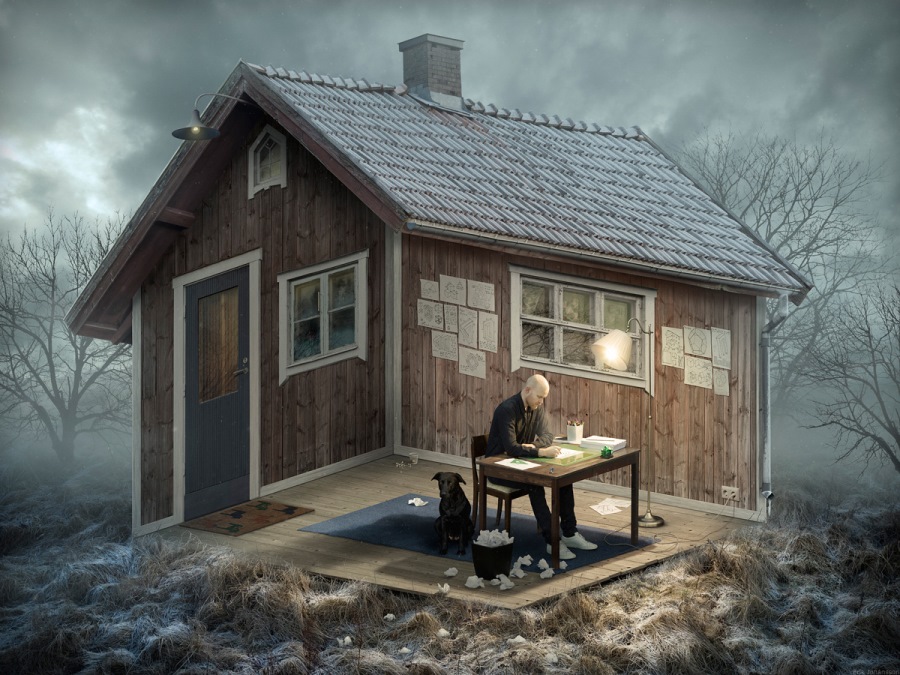
W: Do you have any tips for anyone who wants to start producing surrealist images like yours?
EJ: Don’t use stock photography, and shoot everything yourself. Also, don’t be afraid to get started. I’ve had a lot of ideas and completed a lot of projects, but I only show my best work. You need to experiment and try ideas to find your style. There are lots of good photographers out there, so a way to stand out from the crowd is to find something you have access to that other people don’t. Maybe you live somewhere or own something unique, maybe you know someone who is good at making props. For me, I started shooting the landscapes and places where I grew up; 89% of everything I photograph is within a 10 to 20km radius. Don’t wait for the perfect moment to materialise either, sometimes you just have to get started. There are no shortcuts, only by shooting, succeeding, failing and hard work will you find your style.
W: You’re a Hasselblad ambassador. What drew you to Hasselblad equipment?
EJ: My work is about creating surreal, realistic places. The realism is captured in the detail, and Hasselblad cameras capture superior image quality. I was a customer before becoming an ambassador and picked the brand, not just because of the resolution, but the way it captures colours. I use the compact X1D-50c and H6D-50c — when it comes down to really big prints with lots of detail, to me, it’s the only choice.
About the Author
Mike Harris is Wex Photo Video’s production editor and is an experienced journalist with a passion for motorsport photography. You can view his portfolio via @MDHarrisPhoto on Instagram.

